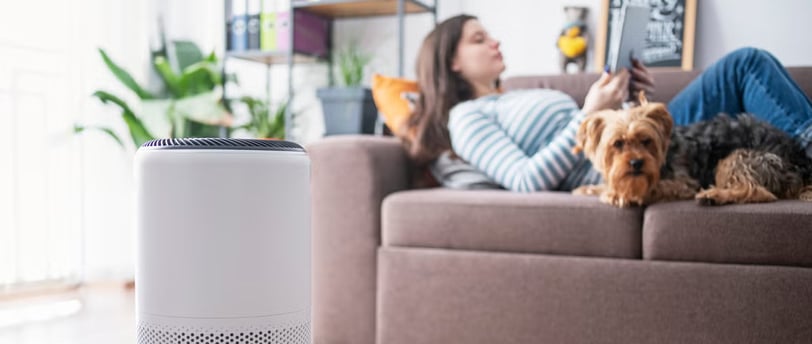Why Air Quality Matters for Allergy Sufferers and Pet Owners
5/8/20242 min read


Most people believe their home air is clean but this isn't always true. Allergy sufferers and pet owners need to consider indoor air quality because it may cause sneezing fits, itchy eyes and even long-term health problems. Pet dander along with dust pollen and mold spores stand as prominent airborne allergens that remain undetectable to the naked eye.
The Environmental Protection Agency (EPA) reports that indoor air pollution levels can reach up to five times the concentration found in outdoor air. Individuals who have allergies or asthma experience continuous contact with environmental elements that exacerbate their condition. Pet owners face an added challenge: Tiny flakes of skin shed by animals become airborne as pet dander which can remain suspended for hours before settling on surfaces which makes escaping it nearly impossible.
The good news? Living with poor air quality is not necessary. Air purifiers work by trapping airborne irritants which results in a cleaner and healthier living space for you and your family. This article investigates top air purifiers for households with allergies and pets so you can achieve better air quality and experience a more comfortable and healthy home environment.
What to Look for in an Air Purifier
Not all air purifiers are created equal. To find the right one for your needs, it’s important to understand the key features that make an air purifier effective. Here’s what to look for:
HEPA Filters
HEPA (High-Efficiency Particulate Air) filters are the gold standard for air purifiers. They can capture 99.97% of particles as small as 0.3 microns, including dust, pollen, mold spores, and pet dander. If you’re serious about improving air quality, a HEPA filter is non-negotiable.
Activated Carbon Filters
While HEPA filters tackle particles, activated carbon filters are designed to absorb odors, gases, and chemicals. This is especially useful for pet owners dealing with litter box smells or lingering pet odors.
CADR (Clean Air Delivery Rate)
CADR measures how quickly an air purifier can clean the air in a specific room size. Look for a CADR rating that matches the square footage of the room where you’ll use the purifier.
Noise Levels and Energy Efficiency
If you plan to run your air purifier continuously, consider noise levels and energy consumption. Some models are whisper-quiet, making them ideal for bedrooms, while others are energy-efficient, saving you money on electricity bills.
Special Considerations for Pet Owners
Pet owners should look for air purifiers with washable pre-filters to trap pet hair and larger particles before they reach the main filter. Additionally, consider the cost and frequency of filter replacements, as pets can accelerate filter wear and tear.
How to Maximize Your Air Purifier’s Performance
An air purifier is only as good as how you use it. Here are some tips to get the most out of your device:
Placement Tips
Place your air purifier in the room where you spend the most time, such as the bedroom or living room.
Keep it away from walls and furniture to ensure proper airflow.
Maintenance Hacks
Replace or clean filters as recommended by the manufacturer.
Vacuum the pre-filter regularly to remove pet hair and dust.
Complementary Strategies
Use a vacuum with a HEPA filter to reduce allergens on floors and carpets.
Groom your pets regularly to minimize shedding and dander.
Wash bedding and curtains frequently to remove trapped allergens.
Breathe Easy, Live Better
Maintaining good air quality in your home is vital to create a healthy and happy environment for those who suffer from allergies as well as pet owners. An effective air purifier helps minimize allergens in your home while removing odors to establish a comfortable living space.
Ready to transform your home’s air quality? Check out our top pick and start breathing easier today!
